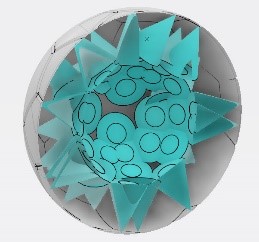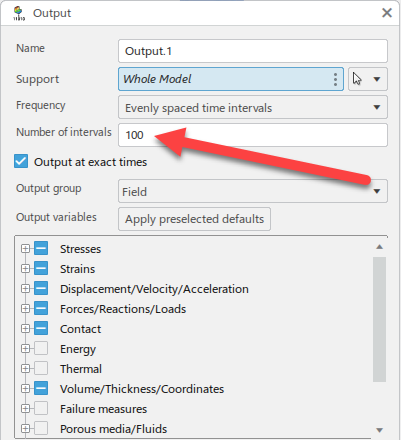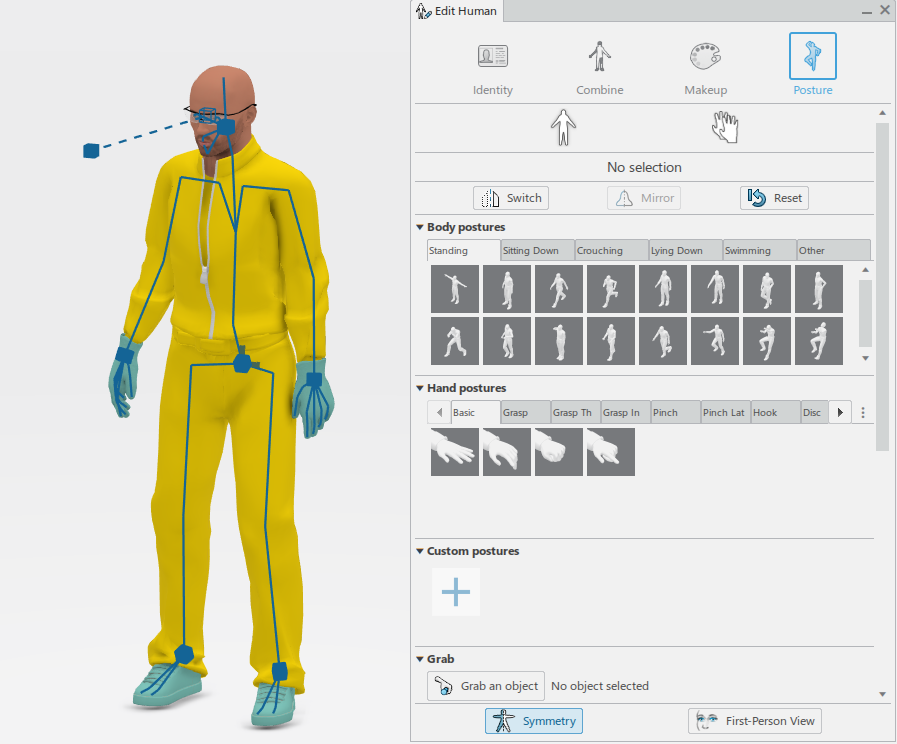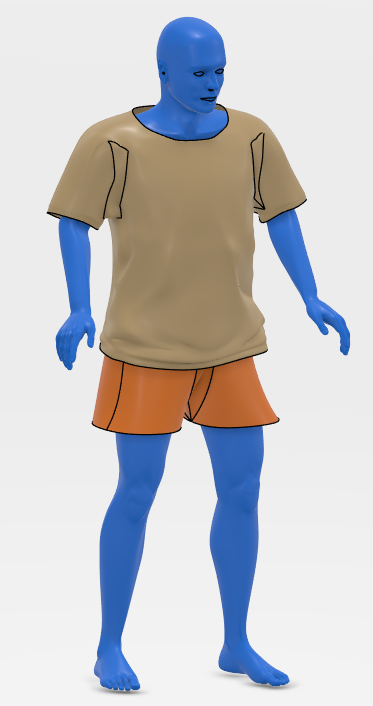
Why does this workflow need to be analyzed?
As part of my learning process I thought it would be a fun video to show some simulation capabilities with a football and my test dummy Bruce. Timing was also with World Cup 2022. The new feature that I wanted to test was fluid cavity feature, basically you fill a balloon with air. The effect can also be shown here. Filling up a football is not very dramatic but I thought, what fun could we have with a football? Let’s do an impact simulation with Bruce and see the effect of the football!

Describe the workflow (subject matter/parts being analyzed, applicable industries, etc.).
Filling up the football is done with a fluid cavity feature, which is just a fluid-filled structure to simulate its mechanical response. You define the fluid cavity to set the volume.

Here I used the mesh.

To set the fluid cavity there is a feature for that as a load so the inside of the ball have pressure.
Then the impact simulation was made with the Abaqus/Explicit solver using a Dynamic Explicit scenario. The explicit solver takes small time steps depending on element size and does not wait for the solver to converge each time step. It is very effective/fast solver for dynamic events and includes time, energy, inertia and damping.


The football had an initial velocity. (Rotation can also be added).
Impact/collision simulation can be used in a lot of industries.
For an example Falling Object Protective Structure (FOPS) is a typical impact test. There are several standards for impact tests depending on the industry, for example: ISO 3449:2005, ISO8084:2003, ANSI/SAE J231.
Now, instead of testing an industrial equipment it was more fun to use a human model: (Bruce) + using the football.
What are the key simulation goals? What are you trying to learn from the simulation?
An impact is a very short dynamic event and is often hard to capture in a real test. You need a high speed camera to capture it in slow motion. The impact is often the fraction of a second, down to milliseconds.

The goal of the simulation was to show an impact in slow motion. Using a lot of “output” frames – We can see a rapid event with a lot of details.
I want to see the result of 0.07s study with 100 frames.
Which SIMULIA solutions (products, roles, etc.) did you use?
I used the Structural Mechanics Engineer role on the 3DEXPERIENCE Platform for the impact simulation.
Bruce was done with the Human Experience Designer. It can create a lot of people with different outfits. There were no football characters so I needed to model the clothes by myself and defined them as surfaces/shell mesh. Bruce is a solid and some work was made to simplify the model since it came very detailed with teeth and eye lashes. (stuff not needed for the simulation)


What were the advantages (benefits) of using simulation?
Test real physics in a virtual environment is much cheaper and faster than real physical tests. Now you need to do physical tests to pass regulation and standards, but in the virtual world you can test and change your design easy fast and cheap. That is the value of simulation. Also is it a great communication tool to inform other stakeholders or customers. Not to forget this is a very sustainable way of product development using virtual testing.
The Abaqus Explicit solver is really powerful to capture rapid dynamic events so behavior can studied in slow motion. The calculation can also be run on the cloud so you can close the computer as soon you have launched it.

Interested in the latest in simulation? Looking for advice and best practices? Want to discuss simulation with fellow users and Dassault Systèmes experts? The SIMULIA Community is the place to find the latest resources for SIMULIA software and to collaborate with other users. The key that unlocks the door of innovative thinking and knowledge building, the SIMULIA Community provides you with the tools you need to expand your knowledge, whenever and wherever.

